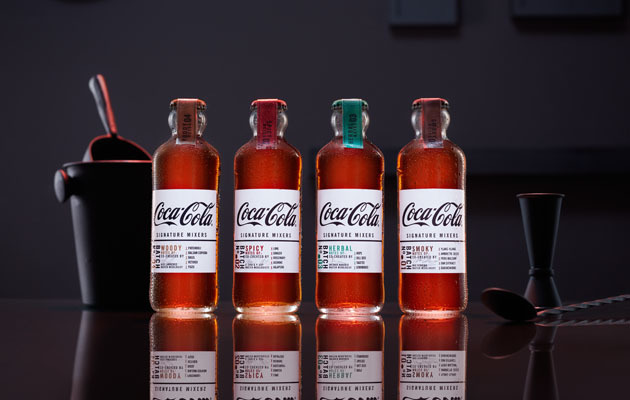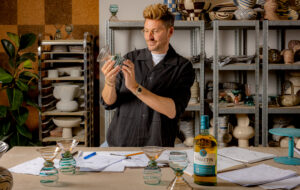 The evolution of the Coca-Cola bottle, from 1899 to 2007
The evolution of the Coca-Cola bottle, from 1899 to 2007
The new straight-edged bottle is a return to its design roots
Coca-Cola has re-released a bottle design first used for the famous beverage over 100 years ago, this time containing a new range of premium mixers.
The Hutchinson bottle, with straight sides, in contrast to the iconic curved glass container, was first used to bottle the drink back in 1894, under a decade after its launch. In its early days, Coca-Cola was sold by the glass for 5 cents at local soda fountains in the US and it was only bottled when Mississippi sweet-shop owner Joseph A. Biedenharn decided he wanted to sell it directly from his store. He was the first to bottle the fizzy drink – and he put it into the Hutchinson, a straight-sided bottle named after the inventor of the metal stopper that topped it. (It was also this stopper that gave rise to the term ‘soda pop’ due to the ‘pop’ sound it made when it was opened.)
Though Biedenharn sent Coca-Cola a case of the bottles he’d filled, it wasn’t until 1899 that the company sold out bottling rights for a $1. It took till 1915 for the curved bottle to come into being, when Coca-Cola held a competition to create what became the iconic ‘Contour’ bottle designed by the Root Glass Company in Indiana on a brief that it had to be recognisable by touch and when broken.
Now, the glass Hutchinson will hold a new drink by the firm, created in collaboration with mixologists: the Coca-Cola Signature Mixers in four flavours, specifically designed for cocktails. The use of the oldest bottle design is part of a wider focus on heritage, tapping into a current boom in nostalgia across design and culture – and society more widely.
 The new range, inspired by the original Hutchinson bottle
The new range, inspired by the original Hutchinson bottle
With a current sense of instability – certainly in the UK, but also across Europe – there has been a harking back to the past in many areas. And according to trend forecasting agency Future Laboratory, when times feel more precarious, people tend to look for comfort – including in what they eat and drink, with 57% of American consumers under 35 listing familiarity it as the top driver for what food and drink they buy. ‘Consumers go for comfort food and familiar bias in times of uncertainty… there’s a preference towards sweet tastes. In terms of colour, brown drinks, whether dark spirits or colas, look natural and familiar,’ experimental psychologist and sensory expert Professor Charles Spence told the Future Laboratory.
The drink itself may be made to tap into a growing market for premium mixers, but the straight-edged bottle has its own aims – not only to differentiate it from other drinks (including its own), but also to tap in to a society seemingly so in search of comfort in the past.
















